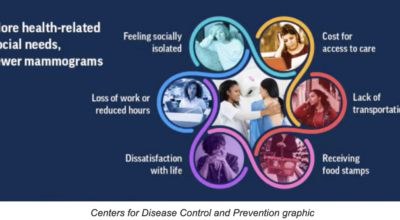Mind and Body: Share the message of rabies
Published 9:55 am Thursday, September 20, 2018
By Carlene Whitt
Clark County Health Dept. Environmentalist
The theme for World Rabies Day 2018, celebrated Sept. 28, is “Rabies: Share the message. Save a life.”
This highlights the importance of education and awareness to prevent rabies.
The World Health Organization (WHO) acknowledges that rabies is present on all continents, except Antarctica, with more than 95 percent of human deaths occurring in the Asian and African regions.
Forty percent of people bitten by suspected rabid animals are children younger than 15.
Rabies is an infectious viral disease that is almost always fatal following the onset of clinical symptoms.
It is spread to people through bites or scratches, usually via saliva.
Rabies is a vaccine-preventable disease. Vaccinating dogs and cats is the most cost-effective strategy for preventing rabies in people.
In the Americas, bats are now the major source of human rabies deaths as dog-to-human transmission has been greatly reduced by increased vaccination rates and the prevention of animal bites.
Rabies prevention includes several measures:
— Visit a veterinarian with pets on a regular basis and keep rabies vaccinations up to-date for all cats, ferrets and dogs.
— Maintain control of pets by keeping cats and ferrets indoors and keeping dogs under direct supervision.
— Spay or neuter pets to help reduce the number of unwanted pets who may not be properly cared for or vaccinated regularly.
— Call animal control to remove all stray dogs from your neighborhood since these animals may be unvaccinated or ill.
The rabies virus is transmitted through saliva or brain/nervous system tissue. You can only get rabies by coming in contact with these specific bodily excretions and tissues.
It’s important to remember rabies is a medical urgency but not an emergency. Decisions should not be delayed.
Wash any wounds immediately. This involves an immediate and thorough flushing and washing for a minimum of 15 minutes with soap and water, detergent, povidone iodine or other substances that kill the rabies virus.
The first symptoms of rabies may be very similar to those of the flu including weakness or discomfort, fever or headache. These symptoms may last for days.
There also may be discomfort or a prickling or itching sensation at the site of the bite, progressing within days to symptoms of cerebral dysfunction, anxiety, confusion and agitation.
As the disease progresses, the person may experience delirium, abnormal behavior, hallucinations and insomnia.
The acute period of disease typically ends after two to 10 days. Once clinical signs of rabies appear, the disease is nearly always fatal and treatment is usually supportive.
Once a person begins to exhibit signs of the disease, survival is rare.
See your doctor for attention for any trauma because of an animal attack before considering the need for rabies vaccination. Your doctor will decide if you need a rabies vaccination.
Decisions to start vaccination, known as post-exposure prophylaxis (PEP), will be based on your type of exposure and the animal you were exposed to, as well as laboratory and surveillance information for the geographic area where the exposure occurred.
The Clark County Veterinary Clinic and the Clark County Health Department have once again joined forces in the effort to prevent rabies.
A rabies clinic is scheduled for Sept. 25 at the Clark County Veterinary Clinic located at 116 Hud Road from 6 to 8 p.m. The vaccinations are available for $5.
For more information, call the Clark County Health Department at 859-385-4453.





